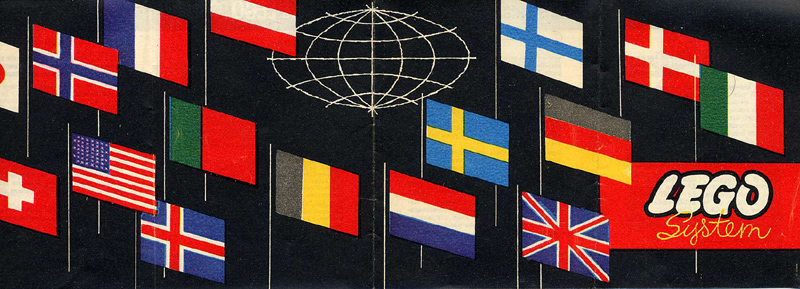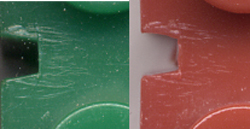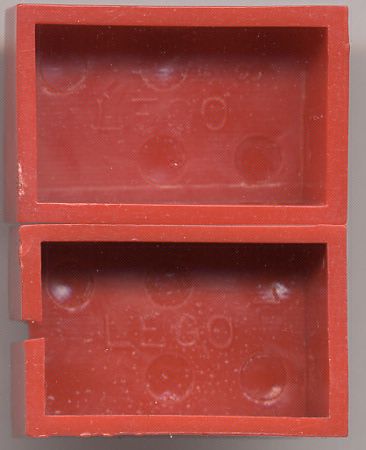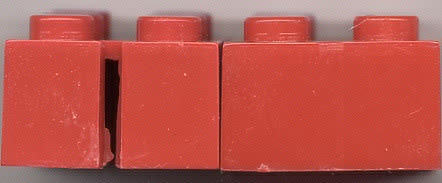
After machining, steel molds for large run plastic injection are hardened. The process makes the accessible surface extremely hard and, in general, impossible to re-machine with steel cutters. However, a diamond stone can still polish, cut or imprint the mold and so a limited number of operations can be economically performed, such as new engravings or the cutting-off of protruding parts that correspond to hollows in the brick.
Several early LEGO molds were re-machined for different purposes. Knowing them and understanding what was done may be relevant. On the one side apparent anachronisms will be shown to be consequences of the use of altered molds. On the other side, if a set includes bricks made with a mold both before and after an alteration, then at least part of the contents were later added to the set.
This was one of the first LEGO molds to carry the brand name. However, initially the logo was rather shallow and the mold units were unnumbered. Also the mold core had not been polished but the situation is not apparent in a scanned image. Seen from beneath, the ground under the "LEGO" name is seen to have little gloss and resolve in many parallel milling burrs that give it a quite unique aspect amidst early bricks.
Bricks molded from the original version seem to be quite rare and I have seen them only in red and white.
The mold was subsequently reworked and the following alterations made to it:
i) the inscription was deepened and made very conspicuous in the bricks, suggesting a clear intention to differentiate the product from imitations;
ii) each mold unit was marked with a faint mold number inscribed with a hand incisor;
iii) the core was polished to give the bricks a glossy underside, completely altering the visual aspect.

The image below shows, on top, a brick from the original mold (the milling marks are not visible). At the bottom, a brick from the altered mold. The "LEGO" inscription is much more conspicuous and the brick is marked with a faint but visible, hand inscribed "7" on the right side. (not apparent in the image).
To ascertain that both "before" and "after" bricks come from the same mold, the file marks have to be compared. After completion, the burrs of a mold are filed, to flatten the surface. Some areas are polished, erasing the file marks, but in some other areas they are preserved and make up a sort of fingerprint of the mold. On the image left are compared the left slot of a "before" brick (red) and an "after" (green). The marks are seen to correspond, as does a large diagonal scratch on top (not apparent in the image) that, alone, is enough to ascertain the identity.
This poorly finished mold was, ironically, one of the longest-living of all.
A careful observer will notice that in sets of 1956, when hollow-studded bricks were already in widespread use, 2X3 bricks with full studs are occasionally met with, which do not fall within my proposed classification. Actually those bricks are not aberrations, but products of an altered 2X3vs01c mold. The brick slots are not cut but rather molded. To form a slot, the mold has a protruding male-piece with the negative shape of the slot. If that piece is cutoff and the stump polished, an unslotted brick will result. But when carefully examined, a small burr will be apparent.
The images below compare views of bricks molded before and after the alteration. The underside view demonstrates that the slot no longer exists, but when comparing the front views of two bricks made with both versions of the mold, a burr is apparent on the top part of where the slot used to be.
 |
 |